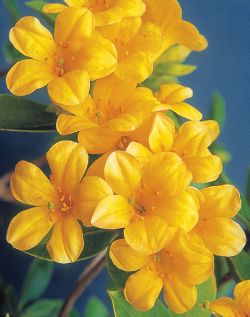Plant
Doctor Archive
 Thrips
on potted vireyas Thrips
on potted vireyas
 MY
vireya rhododendrons in pots suffer from constant thrip infestations.
I've been spraying regularly with neem oil but it doesn't seem to
help. What else could I try to get rid of the thrips? Should I remove
all the infected leaves (if I do, some of the plants will have hardly
any leaves left!). MY
vireya rhododendrons in pots suffer from constant thrip infestations.
I've been spraying regularly with neem oil but it doesn't seem to
help. What else could I try to get rid of the thrips? Should I remove
all the infected leaves (if I do, some of the plants will have hardly
any leaves left!).
I also have some big
palms in pots. Their leaves are turning brown at the tips, particularly
the new ones before they even open. Why?
My big Hedyscepe palm
seems to be dying. All the leaves have turned yellow, one after
the other, within about a month. It suffered from scale but I had
already got this under control with neem before the yellowing. I
suspect a problem in the roots. Are palms susceptible to root diseases?
 THRIPS
feed mostly on the underside of leaves, where they're protected
from the weather, and this makes it hard to get at them with many
sprays. They thrive in warm dry conditions so damage is usually
worse in mid-late summer and plants in full sun are more likely
to become infested than those in shade. They feed on the sap, causing
the leaves to turn silvery and eventually drop off. THRIPS
feed mostly on the underside of leaves, where they're protected
from the weather, and this makes it hard to get at them with many
sprays. They thrive in warm dry conditions so damage is usually
worse in mid-late summer and plants in full sun are more likely
to become infested than those in shade. They feed on the sap, causing
the leaves to turn silvery and eventually drop off.
You could prune the
plant in spring, cutting all infected shoots back by about one third
to encourage new clean growth. Alternatively try spraying with a
systemic insecticide such as Rogor 100, Confidor or Trispray, which
travel through the leaves, thus increasing your chances of actually
getting the chemical to the problem spot. Follow the label recommendations.
Yellowing and browning
of palms in pots (including the umbrella palm, Hedyscepe canterburyana)
can be caused by a variety of problems. Palms are particularly susceptible
to oil sprays, so it could be the neem oil you used that's damaged
them. It can be some time before this type of damage shows.
Other reasons could be
root rot through over or under watering, or too much fertiliser.
To check for root damage, remove the plants from their pots. Trim
off any brown dead-looking roots and repot using fresh potting mix.
Or you could try using the fungicide Alliette, sold as No Root Rot,
which you can spray on leaves or water into the roots to help control
root diseases. Good drainage is essential to prevent root rot, so
make sure the pot doesn't stand in water for long periods after
watering.
Weekend
Gardener, Issue 129, 2003, Page 29
Reproduced with permission from the former Weekend Gardener magazine. The views expressed here are not necessarily those of the RNZIH.
|
 |
 |
|